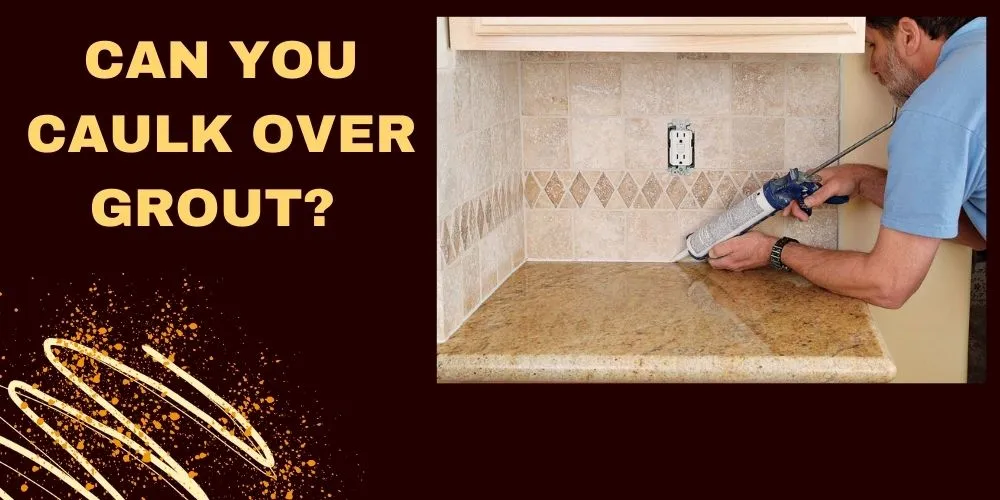The design of our living spaces is a topic of unending debate, especially when it comes to the question: Can bathroom doors swing out?
While seemingly trivial, it integrates concerns about architectural balance, personal safety, and space utilization.
In this article, we set out to explore this question from different angles, considering building code regulations, design principles, and individual preferences.
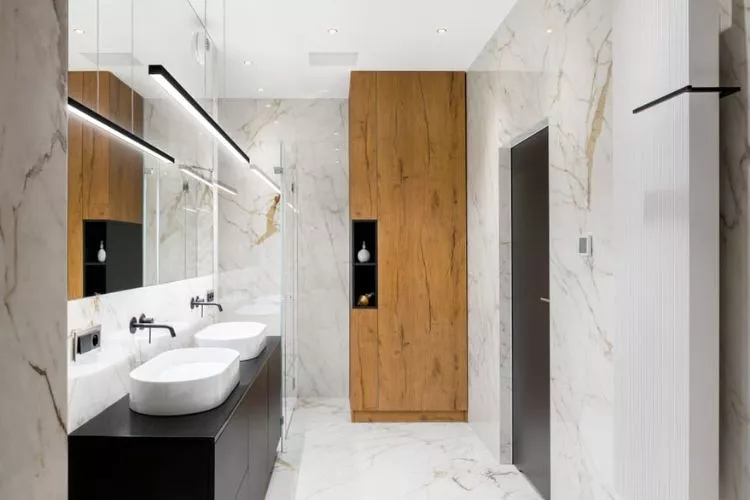
Ultimately, we’ll try to understand if outward-swinging bathroom doors are not just possible, but also desirable. Join us as we dive into the intriguing world of residential architecture and functional design.
Can bathroom doors swing out?
Yes, bathroom doors can swing out. Codes do not mandate the direction they swing. Most doors swing in. But, they can swing out if that works better. Benefits include:
- Safety. In an emergency, the door is easier to open from outside.
- Space. If the bathroom is small, the door won’t take up room inside.
But, there are downsides too:
- Privacy. The door may swing open accidentally.
- Space. If there’s foot traffic outside, the door can be a nuisance.
So, the direction depends on your needs. Designers take many factors into account. The key is to strike a balance. Talk to a professional. They can help you make the best decision for your space.
Bathroom Privacy: The Importance of Door Design
When it comes to bathrooms, privacy is key. The place where we start and end our day should be a sanctuary, allowing for moments of solitude and personal care.
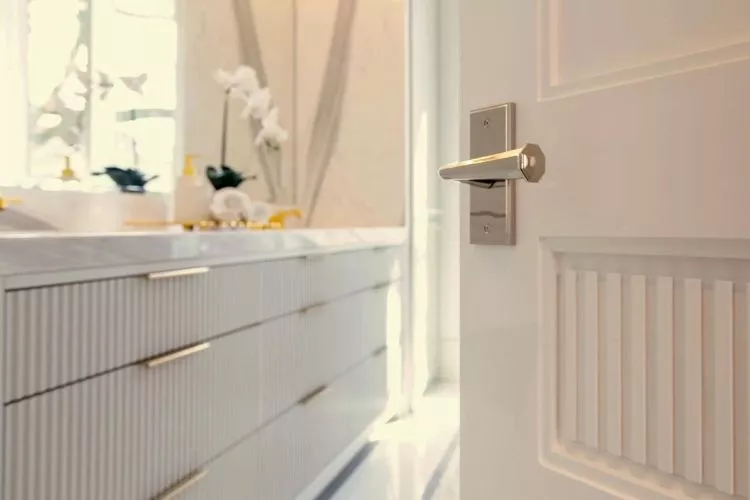
A vital aspect of achieving this privacy is choosing the right door design. In this article, we will discuss the role of doors in privacy, the impact of door design on privacy, and how to choose the right door to protect your personal space.
The Role of Doors in Bathroom Privacy
A door is essential for maintaining bathroom privacy. It serves as a barrier to protect us from unwanted prying eyes, ensuring that we have a dedicated, private space to perform our ablutions.
This becomes even more important in homes with multiple occupants, where maintaining privacy becomes essential for each individual’s comfort.
The Impact of Door Design on Privacy
The design of a bathroom door has a significant impact on privacy. The choice of material, door type, and direction of the door swing all play critical roles in creating a secure, private environment.
For instance, a solid door will offer more privacy than one with glass or other transparent panels. In the same vein, the effectiveness of the locking mechanism significantly contributes to the privacy factor.
A well-functioning lock system ensures that the bathroom user can prevent unwarranted entry while they are using the space.
Choosing the Right Door Design for Privacy
Selecting the right door design is crucial for maintaining bathroom privacy. Here are some factors to consider:
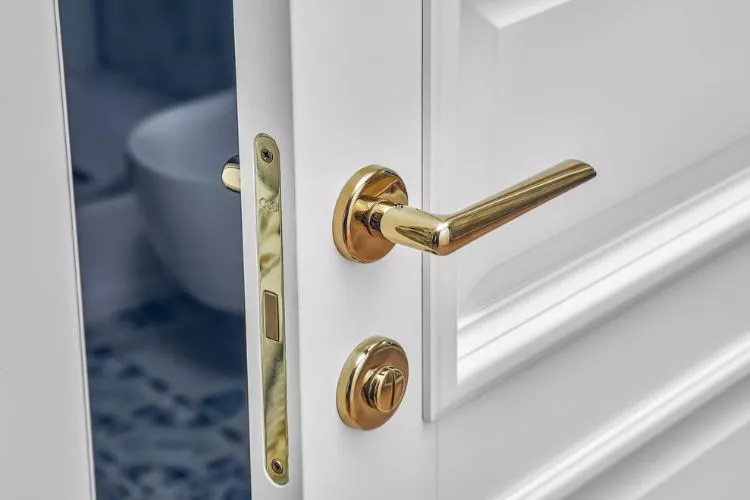
1. Strength and Material
A solid door constructed from sturdy materials like wood or metal is better able to block both noise and line of sight, which is essential for enhancing privacy.
Depending on individual preferences, homeowners can opt for a more traditional hardwood door or a lighter, modern material.
2. Locking Mechanisms
The security of bathroom privacy heavily depends on the effectiveness of the door’s locking system. Installing high-quality locks that are resistant to tampering and accidental unlocking guarantees peace of mind for users.
3. Direction of Door Swing
The direction the door swings can impact privacy. Outward-swinging doors can accidentally open outward when not secured properly, compromising privacy.
Inward-swinging doors are more conducive to maintaining privacy, especially when complemented by an effective lock.
4. Size and Fit
The door should be appropriately sized to cover the entire door frame. Gaps or imprecise fits could lead to sound leaks or direct lines of sight into the bathroom, thus undermining privacy.
5. Aesthetic Compatibility
Although privacy is the main focus, the door design should also be aesthetically pleasing and complement the overall design of the bathroom. The choice of color, finish, and style should be carefully considered to ensure harmony within the space.
The design of a bathroom door plays a significant role in maintaining privacy. There are multiple factors, such as the material, locking mechanisms, door swing direction, and door size, that homeowners must carefully evaluate before making their decision.
Ultimately, finding the perfect door will involve striking a balance between privacy, aesthetics, and functionality, and catering to individual preferences and needs. With the right door installed, users can enjoy the sanctuary of their bathroom space in complete peace and solitude.
How to Choose the Right Direction for Your Bathroom Door?
The direction your bathroom door swings is important. It can affect safety. It can also affect function and flow within your space.
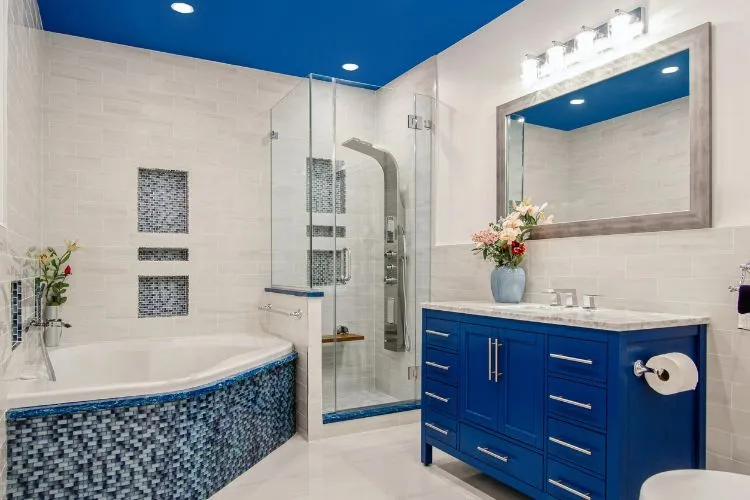
Outward and Inward Doors: Key Differences
Immense differences exist between outward and inward swinging doors.
Outward-Swinging Doors
- Safety: Emergency access is easier. This is crucial if someone inside cannot open the door.
- Space: More room inside a small bathroom.
However, these doors have downsides:
- Privacy: They can swing open accidentally.
- Traffic: They can be a problem in busy hallways.
Inward-Swinging Doors
Inward-swinging doors have pros:
- Privacy: Less chance of accidental exposure.
- Aesthetics: They align with most interior designs well.
But, they also have cons:
- Space: They take up room in the bathroom.
- Safety: Harder to access in an emergency.
Picking the Right Direction: Step-by-Step
Now, let’s look at the steps for choosing the right direction.
- Assess Your Space: First, look at your bathroom’s size. Small? An outward-swinging door saves space. Hallway busy? An inward-swinging door avoids problems.
- Think About Safety: Next, think about safety. If somebody faints inside, outward-swing makes it easier for emergency access.
- Consider Privacy: Lastly, consider privacy. Inward-swinging doors are less likely to accidentally swing open.
Choosing the right direction for your bathroom door involves much thought. Assess your space.
Think about safety. Consider privacy. The best direction will align with your needs on all these elements.
Conclusion:
Bathroom doors certainly can swing out, though the decision should be based on several factors. Considerations like safety, space optimization, privacy, and flow of traffic can influence this choice.
While code doesn’t mandate the swing direction, opting for an outward-swinging door might be beneficial in emergencies or smaller spaces.
However, it’s crucial to balance these considerations to ensure optimal functionality, safety, and privacy for your bathroom. Hearing professional input and evaluating the unique needs of your space will aid in making the best decision.

